General Information
Pediatric Occupational Therapy Described in Memes!
The most adorable memes…
Last month, a friend of mine sent me this adorable image. And, with it, the exciting news that occupational therapy was declared the 4th best job in the US for 2019.
I haven’t been able to find a similar ranking in Australia. So, I guess I’ll just have to celebrate with our American partners and families! So, thanks for letting me know!
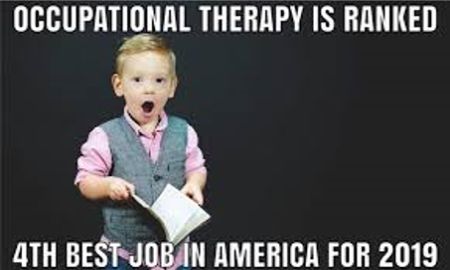
I can’t help but chuckle, though, at the fact that I still must explain to people on a regular basis what my job title means. Do any other occupations require as much explanation as ours as pediatric occupational therapists?
For example, a friend of mine is a metallurgist, and I’ve heard him have to explain that one several times to new friends. So, I’m sure he can empathize! What other occupational titles are confusing for people? I’d love to know that I’m not alone.
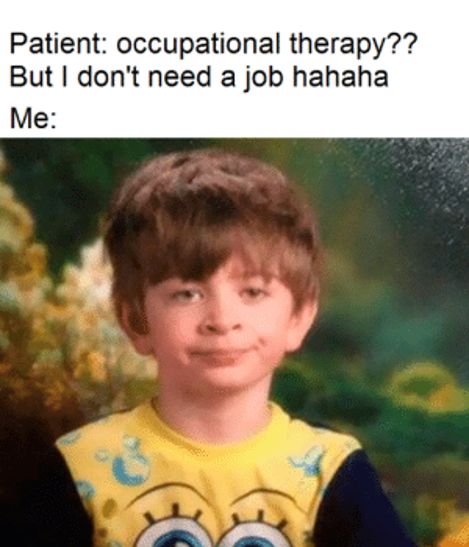
So, I thought it would be fun to start the New Year off with a little “back-to-the-basics” information – and, a little humor, too!
I asked some of the folks on our CoordiKids team to round up their favorite jokes depicting the confusion around the title “occupational therapy.”
Here are our favorites for you to enjoy. Interspersed are my best descriptions of what it is that we as occupational therapists do.
And how, with pediatric occupational therapy, we are able to help children with various physical and neurological challenges.
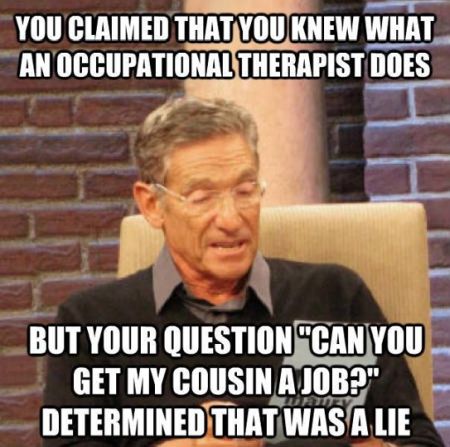
What is occupational therapy?!
Does it have something to do with helping people find their own occupation?
Let me explain. Think of the word “occupation.” Then, consider that an occupation is something that occupies your time, be it work or hobbies.
Therefore, an occupational therapist is someone who works with an individual to get them functioning at their highest level in their occupation.
This might include helping people physically maneuver well enough to do their work. But it also includes their home life too: self-care, leisure, hobbies, hygiene.
People who don’t enjoy the full range of their physicality and mental capacity can be helped with occupational therapy.
Most adults will become familiar with occupational therapy if they become injured or lose functionality due to serious illness.
- Getting in and out of bed,
- working,
- taking care of things around the house,
- memory,
- driving
These are all examples of how your “occupation” might be affected by a loss of function.
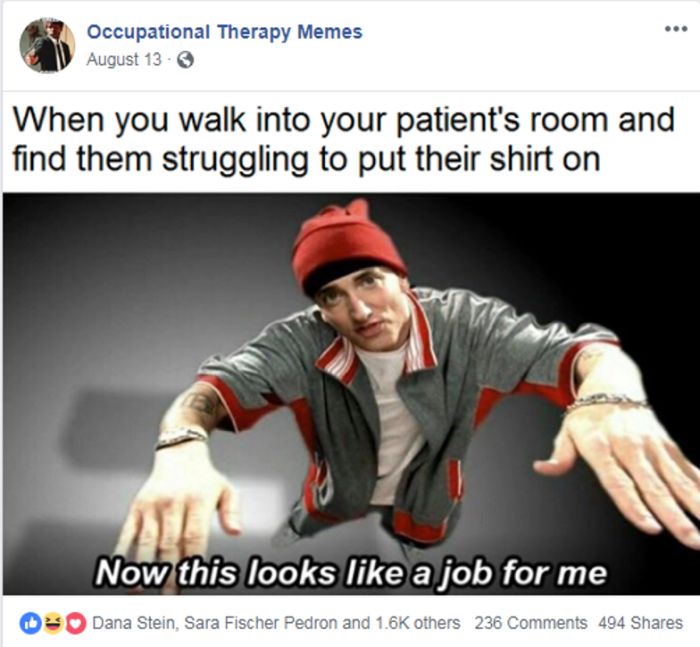
Kids can use occupational therapy too.
And no, I’m not talking about child labor!
A lot of people don’t realize that children can require occupational therapy, just as adults can.
You see, a child’s brain and body are designed to develop together in a magnificent way. And, through a series of general milestones.
You could say that our brain functions and physical-mental functions overlap in a variety of ways. In a sort of in a cause-and-effect way.
So, if a particular child is struggling due to gaps in development, he or she might struggle with
- motor skills,
- visual function,
- oral function (including speech and eating),
- memory,
- organization of the day (and of belongings!)
- and more.

Children facing developmental disabilities are likely to require occupational therapy to gain as much function as possible. Children who need additional help
- learning to walk and balance,
- use their fork and knife,
- speak clearly, or
- take care of themselves on a daily basis
– these are just some of the children who often need intervention in the form of pediatric occupational therapy.
A child’s “occupation” can be anything variety of things. For example, from playing sport, learning in school, socializing with friends, or hobbies of any kind.
That’s where pediatric occupational therapists step in!
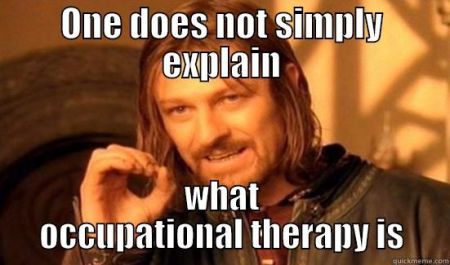
How does occupational therapy work?
We use a combination of interventions and an understanding of neurology to help individuals to function optimally in all areas of life.
Neurology is the brain’s pathways that affect our body’s ability to coordinate movement, sensations, and attention span. So, some of the therapy might seem a lot like physiotherapy.
For example, we might ask clients to complete a series of physical exercises for strength and balance.
But the big difference between an occupational therapist and a physical therapist is this. It is that Occupational Therapists measure progress by observing the client’s ability to complete certain daily tasks.
Whereas, Physical Therapists observe the full range of movement of certain body parts to measure progress.
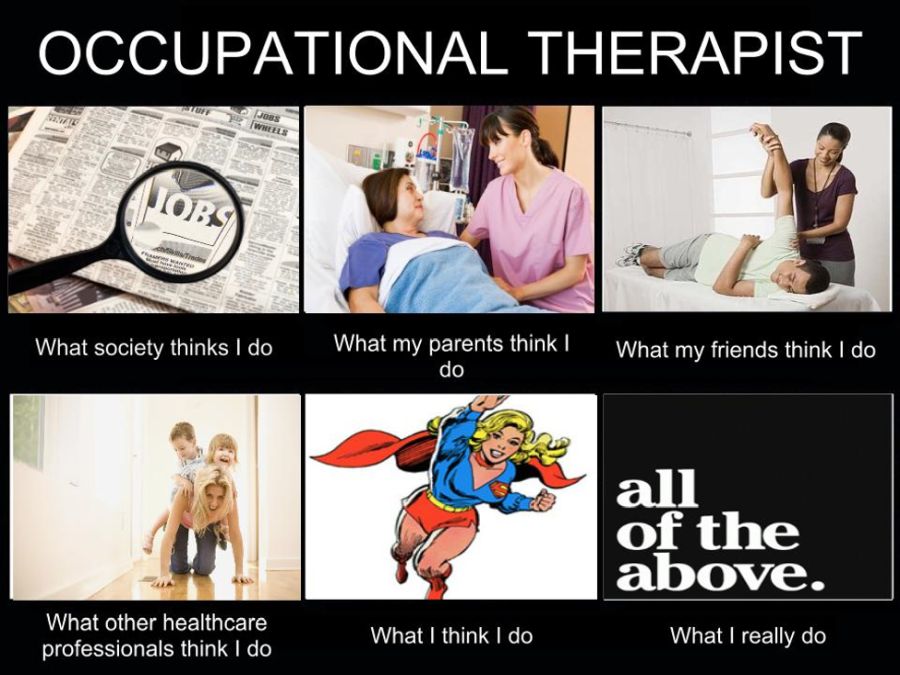
How can virtual occupational therapy, like CoordiKids, be possible?
This is a great opportunity for me to explain a bit further about the programs we’ve created at CoordiKids.
And how, in particular, our programs help people to gain the benefits of OT from the comfort of your home. Traditionally, clients visit OTs in the office – sometimes several times per week. Each visit, we practice specific movements.
Firstly, these specific movements are ones that have been scientifically shown to build and strengthen the neurological pathways affected by the client’s dysfunction.
Then, the movements build in complexity and physical difficulty from week to week. However, it’s quite difficult for the modern family to get to therapy sessions regularly.
Clever use of the Internet
Thanks to video telecommunication via Skype, Zoom, and Apple FaceTime, they don’t always have to.
We’ve developed a virtual consultation system, called CoordiConsult. This allows us to speak with families around the world at the touch of a button.
We are then able to devise a customized strategy for intervention among the team of OTs, dieticians, speech therapists. Furthermore, we can even work in with family counselors
Pediatric Occupational Therapy Program
All programs and exercises are based on neuroscience, sensory integration, research and other techniques. So, these movements work to fill gaps in development for optimal functioning.
Children whose consultations determine them a good fit for these programs can follow along with the series of videos in the comfort of their own home.
Some families choose to pair the virtual occupational therapy program with traditional office visits.
This is because continuing practice at home serves as a way to supplement – or bridge – office appointments. In this way, we are able to reach even the most remote families.
From those deep in the Australian Outback to others as far as South Africa, the Great British Isles and the remotest areas in USA.
How can virtual occupational therapy help children?
Too often, I’m asked to see children that have been falling behind in school for years before someone finally took notice of specific red flags and suggested working with an occupational therapist.
ADHD and ADD, Sensory Processing Disorder, Dyspraxia and Autism Spectrum Disorder are all “hidden” conditions that affect everyday tasks. However, they are often not recognized by their subtle symptoms.
Symptoms that can easily be disregarded as “he’s just being a rambunctious boy!” when your son obsessively rough-houses and wrestles with his friends.
Or, “she’s just a day-dreamer” when your daughter seems to zone out from a project you’re doing together.
Children with sensory integration disorders, learning disabilities, and motor skills challenges often benefit greatly from pediatric occupational therapy.
Some of the behaviors and symptoms that improve significantly with the correct intervention include:
- Concentration & attention at school
- Fidgeting
- Distraction
- Handwriting
- Coordination & balance
- Social skills
- Athletics
- Organization & Planning
- Following instructions
- Sitting still to complete a task
- Emotional outbursts
- Sensory seeking behaviors
- Sensory avoidance
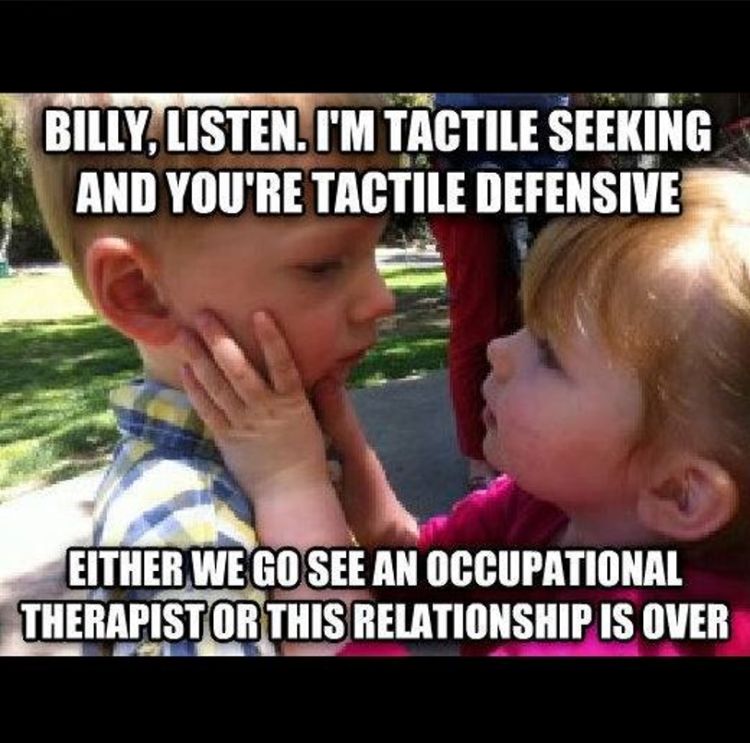
I’m incredibly proud to say that I’ve helped so many families with pediatric occupational therapy.
Furthermore, by creating a custom plan and following through with intervention, including step-by-step exercises to see real change, even more families can be assisted.
That’s what I’ve dedicated my life to, and that’s what my business, CoordiKids does.
